Learn how to cook and bake from scratch as a large family homemaker with tips on planning and prepping. Make your prep days efficient and enjoy the rewards of healthy, delicious homemade meals.
As a homemaker of a large family and a homeschool mom, I often get asked how I do it all. The secret combines careful planning, effective time management, and a few strategic tips and tricks that make cooking and baking from scratch manageable and enjoyable.
One of the most valuable strategies I’ve adopted is setting aside a prep day. A day dedicated to preparing food for the week ahead is crucial for keeping a busy household running smoothly. For me, this prep day typically falls on Sunday or Monday morning. Early mornings work best because the kids sleep, wake up, or move slower. The house smells like a bakery by mid-morning, and everyone can enjoy a fresh muffin while having a morning chat. The benefits of a smoother household routine are immense, relieving you from the stress of daily meal preparation.
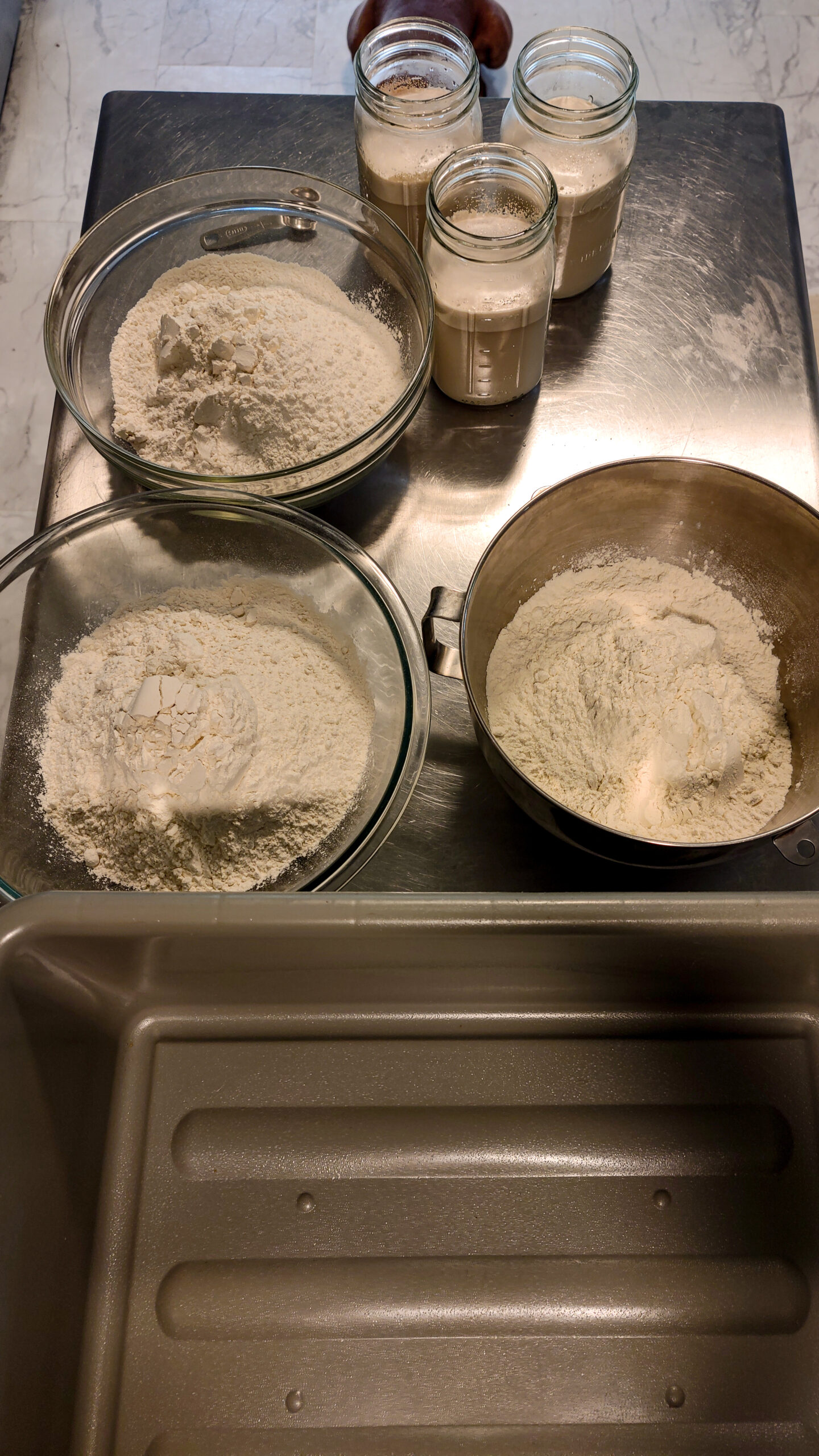
Planning Your Bakes, Condiments, and Meals for the Week:
Start with a Plan:
The first step in adequate meal and bake prep is planning. Take some time each week to prepare your meals, baked goods, and condiments. Prepping not only saves time but also reduces stress during the week. Here's a breakdown of how I plan:
- Review Your Calendar: Look at your family's schedule for the upcoming week. Identify busy days where quick meals are essential and more relaxed days where you can spend more time cooking.
- Inventory Your Pantry and Fridge: Check what ingredients you already have and what you need to buy. Taking inventory helps avoid unnecessary purchases and ensures you use what you have.
- Plan Your Meals and Bakes: Decide what you'll make for breakfast, lunch, dinner, and snacks. Include a variety of baked goods like bread, muffins, and granola, as well as condiments such as ketchup, mayonnaise, and salad dressings.
Create a Detailed Shopping List for Baking and Cooking from Scratch:
Based on your meal plan, create a detailed shopping list. Categorize the list by grocery store sections (produce, dairy, pantry items, etc.) to make shopping more efficient. Don’t forget to include any unique ingredients needed for new recipes you’re trying out.
Night Before Bake Prep:
To make your prep day as efficient as possible, do some preparation the night before. Here’s what you can do to get ahead:
- Measure Ingredients: Get a head start on your baking by measuring out dry ingredients the night before. This saves time and ensures you have everything you need at your fingertips, making you feel more organized and in control of your cooking process.
- Soak Grains: If you’re using grains that need to be soaked, such as oats for granola or wheat berries for bread, start soaking them the night before.
- Thaw Ingredients: For muffins, remove frozen ingredients, such as butter or fruit, from the freezer and let them thaw overnight.
Meal Planning with In-Season Garden Harvest:
If you have a garden, planning your meals around what's in season can be a great way to incorporate fresh produce into your diet and save money. Here's how to do it:
- Assess Your Harvest: Take stock of what fruits and vegetables are ready to be picked. Plan your meals around these ingredients to ensure they are used at their peak freshness.
- Make the Most of Your Harvest: When you have an abundance of a particular item, don't let it go to waste. Consider preserving it by freezing, canning, or making jams and jellies. This practical approach ensures you have garden-fresh produce all year round.
- Incorporate Seasonal Flavors: Use the season's flavors to inspire your meals. For example, summer might mean lots of salads and grilled vegetables, while fall could include hearty soups and stews.
My Meal Planning Guide includes my personal meal planning strategy, thrifty living, bulk shopping, homegrown food, creating a meal plan and efficient grocery shopping list, and meal prep organization.
Balancing Prep Time with Family Time:
As a busy mom, finding time to prep meals and bake can be challenging, especially with little ones at foot. Here are some tips to help you balance prep time with family time:
- Involve the Kids: If your children are old enough, involve them in the kitchen. Younger kids can help with simple tasks like measuring ingredients or mixing, while older kids can do more complex tasks. This not only helps you but also teaches them valuable skills.
- Ask for Help: Don’t be afraid to ask older children to watch the little ones or to keep them entertained while you work. If you have a trusted sitter or family member, their help can provide a much-needed break and support during your prep day.
- Work Around Nap Time: Use nap time to your advantage. Plan to do more involved tasks while the little ones are napping so you can work without interruptions, making you feel more productive and in control of your time.
- Schedule Playtime: While busy in the kitchen, set up a special playtime or activity for the kids. This could be a new toy, a favorite movie, or a craft project that keeps them occupied.
Step-by-Step Weekly Prep Day Routine for Baking and Cooking from Scratch:
Here’s a step-by-step routine I follow on my prep day for baking from scratch. Adjust it as needed to fit your schedule and family’s needs.
- Early Morning Start: If possible, Get up before the kids. Enjoy a cup of coffee and mentally prepare for the day ahead.
- Review Your Plan: Take a few minutes to review your meal and bake plan for the week. Make sure you have everything you need.
- Begin with Baking: Prepare Doughs and Batters: Start with items that need time to rise or rest, such as bread dough or muffin batter. This allows you to move on to other tasks while the dough rises.
- Bake in Batches: Bake them in batches once the dough and batters are ready. Use the time while they’re in the oven to work on other prep tasks.
- Make Condiments: Prepare condiments like salad dressings, sauces, and spreads. Store them in jars or containers for easy access throughout the week—label and date each container to keep track of freshness.
- Meal Prep: Wash, peel, and chop vegetables for the week. Store them in airtight containers or bags. This makes it easy to throw together salads, stir-fries, and snacks.
- Prepare Proteins: Cook and store proteins like chicken, beef, or tofu. This can include grilling, roasting, or slow cooking. Having pre-cooked proteins on hand makes meal assembly quick and easy.
- Assemble Meals: If you plan to make casseroles, lasagnas, or other dishes that can be assembled beforehand, do so now. Store them in the fridge or freezer until you’re ready to cook them.
- Clean as You Go: To avoid a big mess at the end of your prep day, try cleaning up as you go. Enlist the kids to help with simple cleaning tasks.
- Relax and Enjoy: Once everything is prepped and put away, take some time to relax. Enjoy a cup of tea and a freshly baked muffin, and feel good knowing you’re prepared for the week ahead.
Benefits of Cooking and Baking from Scratch:
Cooking and baking from scratch have numerous benefits for you and your family, especially at a time like the current one when the cost of food at the store is 25% higher than it was, making most families food poor.
Sense of Accomplishment: Creating delicious meals and baked goods from scratch can give one a sense of pride and accomplishment. It’s a rewarding experience that boosts confidence in the kitchen.
- Healthier Meals: When you cook from scratch, you control the ingredients, which means you can avoid preservatives, additives, and excessive sugar and salt.
- Cost Savings: Homemade meals and baked goods are often cheaper than store-bought alternatives, especially when buying bulk ingredients.
- Better Flavor: Homemade food tastes better. Fresh ingredients and homemade recipes result in more flavorful and satisfying meals.
Tools and Equipment in My Homemaker Kitchen:
Over the last 20 years, I have added tools and equipment for the kitchen to my homemaker for baking and cooking from scratch. Having the right tools and equipment can make a big difference in the efficiency and enjoyment of your prep day. Here are some of my essentials:
- Quality Knives: Good knives make chopping and slicing much easier and safer. Invest in a quality chef’s knife, paring knife, or knife with a serrated blade.
- Cutting Boards: To avoid cross-contamination, have several cutting boards available. Use separate boards for meats, vegetables, and bread.
- Mixing Bowls: Various bowls in different sizes are essential for mixing, marinating, and storing ingredients.
- Measuring Cups and Spoons: Accurate measurements are crucial in baking, so have a set of measuring cups and spoons.
- Stand Mixer: A stand mixer is invaluable for making bread dough, cookies, and other baked goods.
- Baking Sheets and Pans: You should have a variety of baking sheets and pans, including loaf pans, muffin tins, and cookie sheets.
- Storage Containers: Store prepped ingredients and meals in airtight containers. Label and date each container to ensure freshness.
- Food Processor: A food processor is great for quickly chopping, slicing, and pureeing ingredients.
- Slow Cooker: A slow cooker can be a lifesaver for busy days. Prepare meals in the morning, and they’ll be ready to eat by dinner.
My Meal Planning Guide includes my personal meal planning strategy, thrifty living, bulk shopping, homegrown food, creating a meal plan and efficient grocery shopping list, and meal prep organization.
Step-by-Step Weekly Prep Day Routine for Baking from Scratch:
Based on mine, here’s a more detailed step-by-step routine for your weekly prep day. Adjust it as needed to fit your schedule and family’s needs.
Early Morning Start:
7:00 AM - Wake Up-
Enjoy a quiet cup of coffee and review your plan for the day.- Gather any last-minute ingredients and tools you might need.
7:30 AM - Start Baking
- Bread Dough: Begin by mixing your bread dough. This needs time to rise, so starting early is essential.
- Muffin Batter: Prepare muffin batter and set aside. If you’re making multiple muffins, prepare each batter and set them aside separately.
- Granola: Mix and spread out granola on baking sheets. This can bake while you work on other tasks.
Bake in Batches 8:00 AM
- Bread: Shape your bread dough and place it in loaf pans. Allow it to rise again while you work on other tasks.
- Muffins: Fill muffin tins with batter and place them in the oven. Bake until golden brown, and a toothpick inserted in the center comes clean.
- Granola: Check on the granola, stirring occasionally to ensure even baking.
Prepare Condiments 9:00 AM
- Ketchup: Mix and cook homemade ketchup, then store it in a jar.
- Mayonnaise: Whisk together ingredients for mayonnaise and store in a container.-
- Salad Dressings: Prepare a variety of salad dressings, such as vinaigrettes and creamy sauces.
Clean Up & Relax 10 AM
- Clean as You Go: Clean up as you go throughout the morning to avoid a big mess at the end. Wash dishes, wipe down counters, and put away ingredients.
- Store and Label: Ensure all prepped items are stored in airtight containers and labeled with the date.
- Take a Break: Once everything is cleaned up and put away, take some time to relax. Enjoy a freshly baked muffin and a cup of tea, knowing that you’re prepared for the week ahead.
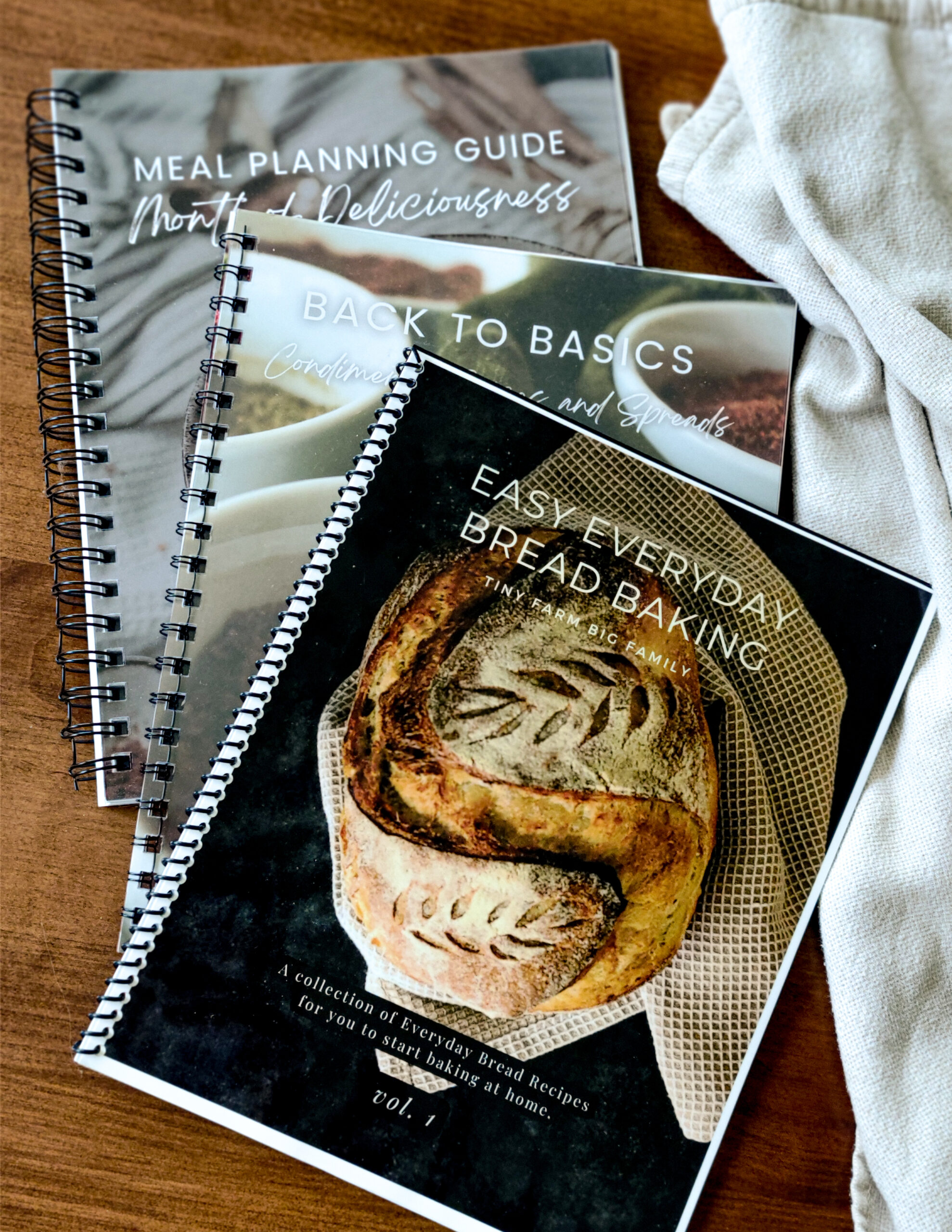
Ready to Get Started?
- Do you need help switching to everyday baking with tried-and-true recipes? My Everyday Bread Recipe ebook is a great starting point.
- Are you looking to start making your condiments, seasonings, and spreads? My Back to Basics guide contains all of our family's favorites and will help you transform your pantry into a homemade pantry.
- Do you need a guide to help you create and budget a month of delicious and healthy meals? From your homestead, from scratch, or a simple way of planning? My meal planning guide is designed to help you streamline your culinary routines and bring joy and variety to your dining table.
Print your guides here

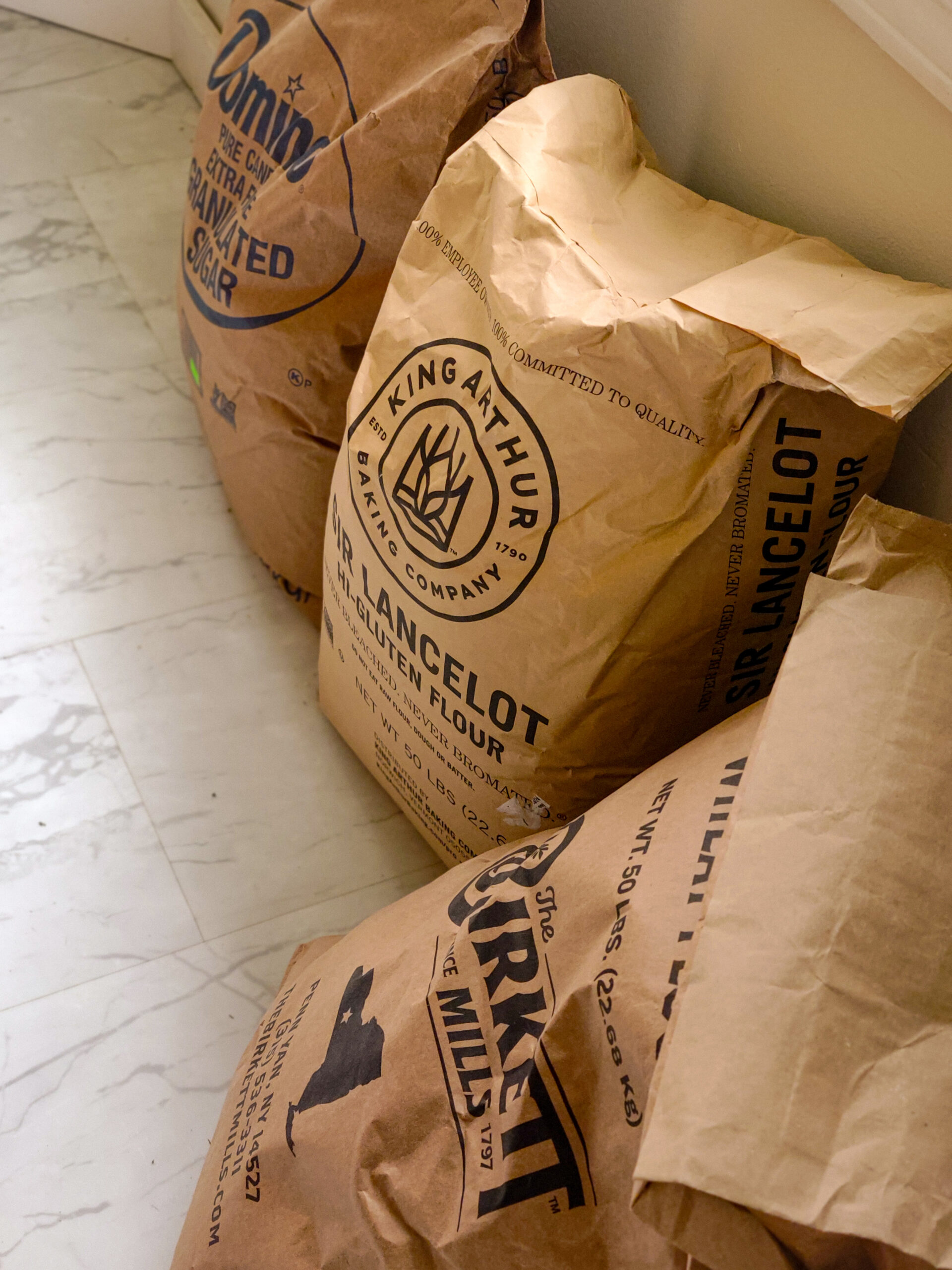
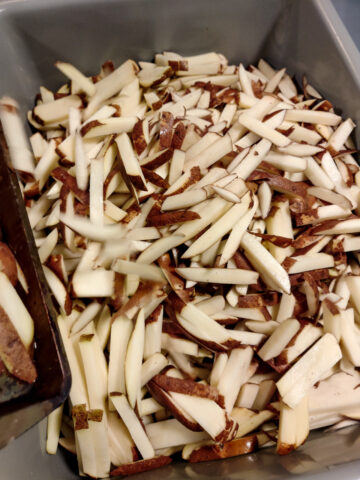
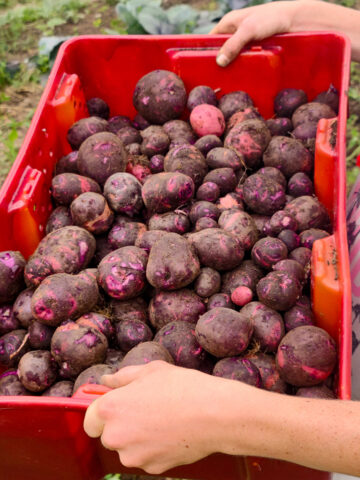
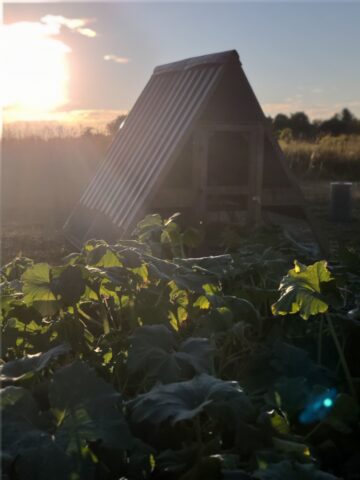
Leave a Reply